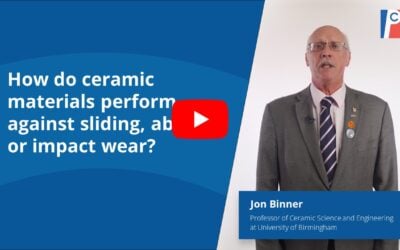The Difficulties of Prototyping with Ceramics
How long does it take you to prototype a new idea or concept? You need a precision coil-former; a high-voltage insulator that is immune to arcing; spacers, cavities or reflectors in laser assemblies. Metal parts just won’t do the job – they conduct electricity; they conduct heat; they’re just not suitable for your task.
Maybe you need hermetically sealable, vacuum feed-through components or coil supports; perhaps thermal breaks in high temperature processes. What do you need in demanding, resistant parts?
Technical ceramics vs. Plastics
Technical plastics are good, for their temperature range, and have a fast turnaround, but if you want to expand into higher temperatures you’re going to have to move into technical ceramics. The problem here is time. Technical ceramics generally need a great deal of processing. With conventional ceramics, it can take more than two months to get a ceramic prototype made, which includes diamond machining, sintering, polishing, and any number of re-grinds, if the shrinkage during sintering wasn’t sufficient, or as expected. And those two months only apply if you have all the machines at hand and ready-to-go. If you need additional tooling, that timeframe could double.
Rapid Ceramic Prototyping with Macor
How would you like to use a material that could be prototyped in one day? If you can machine metal, you can machine Macor. You take a rod, bar, tube, slab, or block and place it in your CNC, or whatever you usually use, and in less than a day you can have a custom ceramic prototype.
How about this notion then: If you made a one-off prototype and it didn’t fit, you would still have sufficient time that same day to make an adjustment and machine another prototype. Not something that would need to be heat-treated before it could be used, or processed in dozens of other ways; this is a part you could take off the lathe and fit into your test-bed instantly. Ready-to-go the instant the machining was complete. Interested?
Macor Machinable Glass Properties Overview
Macor possesses incredible smoothness, compression strength, high thermal insulating value, radiation immunity, and 40KV dielectrical resistance per millimeter. And unlike plastics, whose temperature resistance and rigidity starts to fall off at as little at 150°C, Macor is non-ductile and is deformation resistant to 800°C (up to 1,000°C with no load or weight-bearing). Macor machinable ceramic is so thermally stable that it is cut into small blocks against which are measured deformations in other materials in high temperature, radioactive conditions.
Macor Prototyping Applications
Macors’ non-wetting characteristics make it an ideal material for handling molten lead, aluminium, antimony, bismuth, cadmium, magnesium, magnesium alloy, selenium, tin, zinc, or other “low” temperature molten metals. It would make wonderful tips for oxyacetylene brazing torches, which would never collect metal oxides; where intrinsic gas-cooling would keep it below its melting point while producing flames temperatures in excess of 3400°C; where they might never get clogged. It is a favorite material for high vacuum applications too, such as electron microscopy, because when properly baked out, it cannot outgas at any achievable vacuum level.
Better yet, Macor has been to space. It was originally designed for NASA’s space shuttle to prevent thermal transfer from the exterior to the inside of the vehicle. It was used in the window frames of the space shuttle because of its electrical and heat insulating qualities; because of its radiation resistance and non-porosity (it has a porosity of zero); and because it emits no vapors (toxic or otherwise) of any kind, especially at the lower pressures that were found in spacecraft.
Machining Macor Ceramic
With carbide tools Macor can be cut, shaped, formed, or tapped. If making your own parts is intimidating, we are always happy to lend our many years of advanced ceramics experience to provide you with the best advice available.
If you’ve always had your parts made offsite by a subcontractor, we can make prototypes and custom parts for you, too. Our precision equipment allows us to demonstrate that every single micron is important, and we’ll do it right! Waiting no less than eight to ten weeks for a prototype is a thing of the past. Time is back on your side!
But how can you machine this to such tight tolerances?
Macor is a composite material made of fluorophlogopite (a type of Mica) in a borosilicate glass matrix (such as used in test tubes and Pyrex®) in a ratio of 45/55 respectively. The randomized microcrystalline structure allows tools to excavate micrometer-sized portions without cracking and fracture, leading to very exacting tolerances. Although it can be worked with high-speed steel tools, carbide is recommended for the durability of the tools themselves.
Macor Machinable Glass Ceramic Composition
- 46% silica (SiO2)
- 17% magnesium oxide (MgO)
- 16% aluminium oxide (Al2O3)
- 10% potassium (K2O)
- 7% boron (B2O3)
- 4% fluorine (F)
Things to be aware of when using Macor
Macor is vulnerable to halogen acids such as HCl (hydrochloric acid), although not a flash failure or sudden deterioration. Tests show a 2.52 gram sample (1cc) of Macor exposed to Hydrochloric Acid at a pH of 0.1 experienced a 100 mg loss, or 3.96% over 24 hours. Exposed to Sodium Hydroxide at a pH of 13.2 it experienced a loss of 0.396% in six hours. It is stable to 1000°C in air, and to 600°C in vacuum. Beyond 600°C (in vacuum) fluorine evolution will occur manifesting as boron trifluoride or hydrofluoric acid.
Joining Macor
Macor can be connected and joined with a variety of methods. If it is metalized (metal inks or sputtering) it can be soldered, or brazed to other pieces, or bound to metal pieces such as titanium in the image to the right.
Epoxy provides a strong joint and sealing glass provides a hermetic seal. Macor can even be lapped and bound with a convention mechanical connection.
With its remarkably tight machining tolerances of up to 0.0005in (0.013mm), joining is a simple and straightforward task. Its coefficient of thermal expansion readily matches most metals and sealing glasses. With appropriate polishing it can have a surface finish of less than 20 μinches, or 0.5 μmeters.
Ceramic Prototyping – Contact Us
Precision Ceramics is your Macor machinable glass specialist for your technical ceramic prototyping & manufacturing needs; we are always happy to use our many years of advanced ceramics experience to provide advice on materials, design, and application.
If you would like to buy Macor plates, rods, bars, tubes, or custom machined Macor components, or have any questions, please contact us and one of our experts will be happy to assist you.








